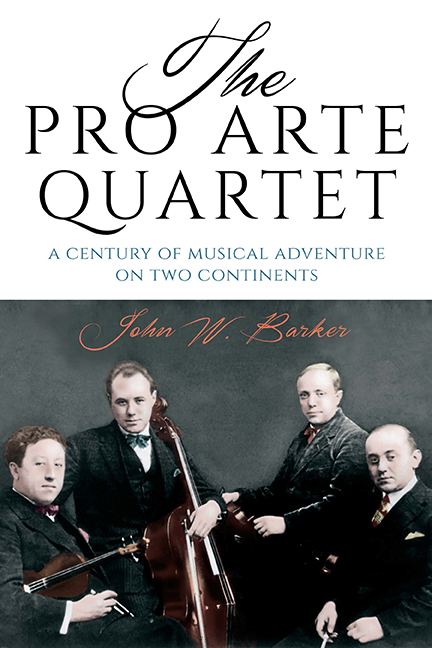Book contents
- Frontmatter
- Dedication
- Contents
- Preface
- Lists of Quartet Membership
- Introduction: Quartet Contexts
- 1 The Onnou Years, I (1912–31)
- 2 The Onnou Years, II (1932–40)
- 3 The Brosa Years (1940–44)
- 4 The Kolisch Years (1944–67)
- 5 The Paulu Years, I (1967–79)
- 6 The Paulu Years, II (1979–95)
- 7 The Perry Years (1995–Present)
- Conclusion: Retrospect and Prospects
- Appendixes
- Selected Bibliography
- Index A Composers
- Index B General
Introduction: Quartet Contexts
Published online by Cambridge University Press: 10 June 2021
- Frontmatter
- Dedication
- Contents
- Preface
- Lists of Quartet Membership
- Introduction: Quartet Contexts
- 1 The Onnou Years, I (1912–31)
- 2 The Onnou Years, II (1932–40)
- 3 The Brosa Years (1940–44)
- 4 The Kolisch Years (1944–67)
- 5 The Paulu Years, I (1967–79)
- 6 The Paulu Years, II (1979–95)
- 7 The Perry Years (1995–Present)
- Conclusion: Retrospect and Prospects
- Appendixes
- Selected Bibliography
- Index A Composers
- Index B General
Summary
The world of music making into which the Pro Arte Quartet was born and in which it operated was well established at the ensemble's inception. The instrumental types and ensemble combinations had been clearly established over generations, as had the forms of ensemble writing. A repertoire of working literature was also being developed, and our quartet made important contributions to this. Its rise and flourishing was accompanied by the operations of many continuing quartet ensembles of significant stature—its siblings and rivals—in an ever-changing kaleidoscope of groups, many of which fell by the wayside as the Pro Arte continued to thrive
These factors provide an important backdrop to our story of the Pro Arte Quartet, and so it is perhaps useful at the outset to say a few words about them, to establish a context.
What has become accepted over some two-and-a-half centuries as the “string quartet” is a somewhat eccentric combination of instruments, if one thinks about it. We expect a vocal ensemble or a chorus normally to consist of the soprano-alto-tenor-bass combination of voice parts (SATB). As it evolved, however, this particular mustering of the violin family amounts to two trebles (or sopranos), an alto and a baritone, but no true bass. On paper, that combination might seem somewhat top-heavy. Nevertheless, it is, in function, quite flexible. The second violin can pair with either the first or with the viola; the viola can also pair with the cello, while the latter, with its wide range, can both reach high in pitch and offer a full-bodied bass line. It is a remarkably adaptable combination, a fact that has doubtless contributed to its enduring acceptance.
The flexibility of the string quartet formulation is furthered, of course, by the frequent introduction of a fifth instrument, for quintet combinations. The piano is the most common such addition, but wind instruments (such as clarinet) have also found favor. The addition of another stringed instrument, either another viola or another cello, has helped produce some extraordinarily fine string quintets. The addition of both has generated the string sextet, which allows fascinating rethinking of the quartet texture. While the string-quartet configuration can thus be carried beyond itself, that conventional foursome has remained the firm focus of our chamber music.
- Type
- Chapter
- Information
- The Pro Arte QuartetA Century of Musical Adventure on Two Continents, pp. 1 - 6Publisher: Boydell & BrewerPrint publication year: 2017

